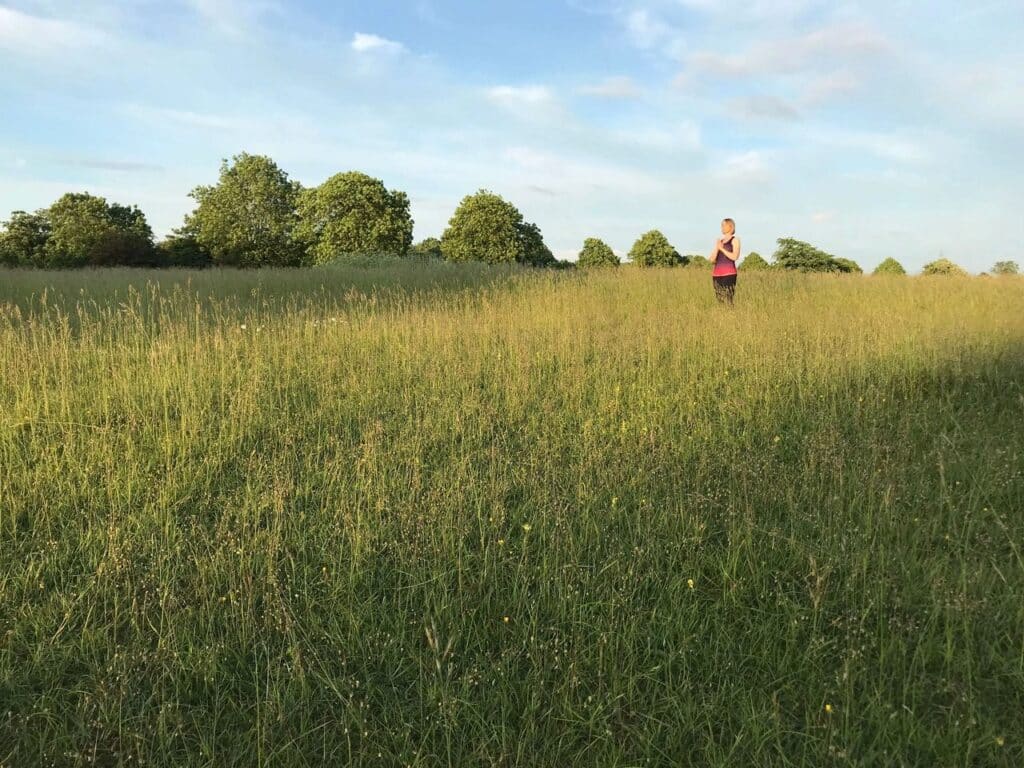Strength in nature
Having written about the importance of Vitamin D for bone health in my previous post it would be remiss of me not to mention the importance of strength and resistance training which works alongside nutrition in order to keep our bones healthy as we age.
Strength training and bone density
One of the many benefits of this specific type of exercise is that, alongside the “sunshine vitamin”, it helps prevent osteopenia or loss of bone mineral density.
This is especially important as we age, and particularly in post-menopausal women. Importantly, it can even help to reverse this condition which can result in osteoporosis (which, while it can be managed, can’t be reversed). And we all know how devastating osteoporosis can be.
Our bone density peaks in our thirties, falling drastically away post-menopause as our oestrogen levels plummet and our ability to build new bone diminishes. But as bone is a living tissue there are things that we can very much do to support cell renewal, and strength training is one of them.
Yoga for bone health
Strength training sometimes is and sometimes isn’t associated with yoga, depending on the type or school of practice. I don’t generally practice – or teach – a particularly challenging form of yoga in that sense. I prefer my yoga to be accessible to everyone plus I like to work on areas that I believe you can’t get from other types of training, but I view it as a perfect foundation: mobilising and strengthening joints in order to enable a stronger practice or more vigorous forms of exercise at a different time if desired or required -– and perhaps even helping to avoid any injuries that might be sustained otherwise.
In addition to this, while weight-bearing yoga does have a place in the strength world, lifting actual weights is more effective for the purposes of bone health.
In the real world though, we know not everyone has the time or the inclination to hang out in the gym. You can’t do everything, after all.
More benefits of strength training
But for those of us of a certain age, maintaining strength is vital. As well as helping keep bones healthy it provides other health benefits too, including lower blood pressure, a sharper memory and reduced risks for heart disease, cancer and Type 2 diabetes. In addition to this, from the age of around 30, as well as our bone mineral density being on the decline, we start to lose our lean muscle mass in a natural process called sarcopenia that accelerates as we get older.
Yoga postures for strength will maintain muscle mass which is linked to our metabolism and therefore help keep our weight in check.
Now well into my own perimenopause I am suddenly becoming aware of the need to incorporate more strength work into either my yoga or exercise routines. Excitingly, after years of rehabbing a chronic injury, I now feel I can demand more from my body and that it might actually respond in a friendly and positive way, rather than either refusing to participate outright or reluctantly engaging before embarking on a sulk the following day that can last for days or even weeks. So it seems a natural progression to challenge myself a little more. I’ve been looking at how yoga can improve my strength.
Yoga for strength
So now that I am needing something a little stronger, what to do?
Here I outline how you can easily incorporate some simple weight bearing asanas into your yoga practice. You’ll notice there are a few classic poses that I occasionally include in my classes so yes, you could call it strength training by stealth!
- Uttihita Chaturanga Dandasana (Plank)
- Chaturanga Dandasana (Four-limbed staff pose)
- Adho Mukha Svanasana (Downward dog)
- Anjaneyasana (Crescent lunge)
- Setu Bandha Sarvangasana (Bridge)
- Utkatasana (Chair)
Sun salutation
Now, the observant among you may have noticed that the first four poses essentially make up a traditional sun salutation (Surya Namaskar). Which makes it so much the easier.
Others might have noticed that some of these poses are remarkably similar to exercises you could do down the gym. A plank (Uttihita Chaturanga Dandasana) for example, that turns into a press up (Chaturanga Dandasana). Or some static squats (Utkatasana).
And just as you can practise yoga and also go running or kickboxing if you so wish, you could practise yoga and then separately go to the gym and do these exercises. Or you could turn them into a little bonus yoga routine to tag onto your practice instead, or even make the them your entire practice.
If I was a purist aligned to any particular yoga tradition I couldn’t possibly consider doing all this as a form of pick and mix practice. For Sophy Hoare, one of Vanda Scaravelli’s students and author (along with Diane Long) of Notes on Yoga: The Legacy of Vanda Scaravelli, when she immersed herself in the teaching of Scaravelli she found that “the new [form of yoga] could not be grafted on to the old; and I began to realise the two could not be merged”.
But I’m not a purist. I’m listening to my body, reading the literature, looking at the other commitments I have in my life and this is what works for me at the moment. These extra poses offer up the yang to my yin. Sometimes my practice is more yin than it is yang, but that’s good enough for me.
Oh, and full disclosure: in order to look after my ageing bones as effectively as I can, I do also go to the gym. As I said, yoga has its place in the strength/resistance training world, but can’t fully replace the old heave-ho.


